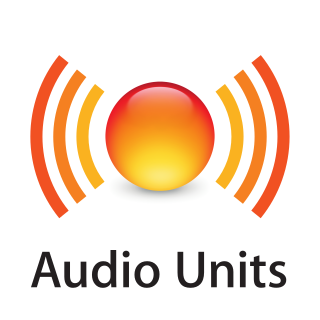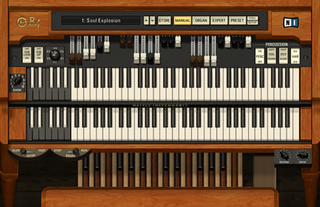
FL Studio is a digital audio workstation (DAW) developed by the Belgian company Image-Line.

Cubase is a digital audio workstation (DAW) developed by Steinberg for music and MIDI recording, arranging and editing. The first version, which was originally only a MIDI sequencer and ran on the Atari ST computer, was released in 1989. Cut-down versions of Cubase are included with almost all Yamaha audio and MIDI hardware, as well as hardware from other manufacturers. These versions can be upgraded to a more advanced version at a discount.
Steinberg Media Technologies GmbH is a German musical software and hardware company based in Hamburg. It develops music writing, recording, arranging, and editing software, most notably Cubase, Nuendo, and Dorico. It also designs audio and MIDI hardware interfaces, controllers, and iOS/Android music apps including Cubasis. Steinberg created several industry standard music technologies including the Virtual Studio Technology (VST) format for plug-ins and the ASIO protocol. Steinberg has been a wholly owned subsidiary of Yamaha since 2005.

Virtual Studio Technology (VST) is an audio plug-in software interface that integrates software synthesizers and effects units into digital audio workstations. VST and similar technologies use digital signal processing to simulate traditional recording studio hardware in software. Thousands of plugins exist, both commercial and freeware, and many audio applications support VST under license from its creator, Steinberg.

A digital audio workstation (DAW) is an electronic device or application software used for recording, editing and producing audio files. DAWs come in a wide variety of configurations from a single software program on a laptop, to an integrated stand-alone unit, all the way to a highly complex configuration of numerous components controlled by a central computer. Regardless of configuration, modern DAWs have a central interface that allows the user to alter and mix multiple recordings and tracks into a final produced piece.

Rosegarden is a free software digital audio workstation program developed for Linux with ALSA and Qt4. It acts as an audio and MIDI sequencer, scorewriter and musical composition and editing tool. It is intended to be a free alternative to such applications as Cubase.

Audio Units (AU) are a system-level plug-in architecture provided by Core Audio in Apple's macOS and iOS operating systems. Audio Units are a set of application programming interface (API) services provided by the operating system to generate, process, receive, or otherwise manipulate streams of audio in near-real-time with minimal latency. It may be thought of as Apple's architectural equivalent to another popular plug-in format, Steinberg's Virtual Studio Technology (VST).
Acid Pro is a professional digital audio workstation (DAW) software program currently developed by Magix Software. It was originally called Acid pH1 and published by Sonic Foundry, later by Sony Creative Software as Acid Pro, and since spring 2018 by Magix as both Acid Pro and a simplified version, Acid Music Studio. Acid Pro 8 supports 32-bit and 64-bit architectures, and has MIDI, ASIO, VST, VST3, DirectX Audio, and 5.1 surround sound support.
Disposable Soft Synth Interface (DSSI) is a virtual instrument plugin architecture for use by music sequencer applications. It was designed for applications running under Linux, although there is nothing specific to Linux in the interface itself. It is distributed under the terms of a combination of LGPL-2.1-or-later and some BSD licenses, all of which are free software licences.

LMMS is a digital audio workstation application program. It allows music to be produced by arranging samples, synthesizing sounds, entering notes via mouse or by playing on a MIDI keyboard, and combining the features of trackers and sequencers. It is free and open source software, written in Qt and released under GPL-2.0-or-later.

Image-Line Software is a Belgian software company best known for its digital audio workstation program FL Studio and related audio plugins such as Sytrus and Harmor. Image-Line was founded in 1994. In 2007, Image-Line introduced Deckadance, a virtual DJ console application. The company also produced EZGenerator, a template-based web editing program.
In computer music and professional audio creation, a DirectX plugin is a software processing component that can be loaded as a plugin into host applications to allow real-time processing, audio effects, mixing audio or act as virtual synthesizers. DirectX plugins allow the replacement of traditional recording studio hardware and rack units used in professional studios with software-based counterparts that can be connected together in a modular way. This allows host manufacturers to focus on the conviviality and efficiency of their products while specialized manufacturers can focus on the digital signal processing aspect. For example, there are plugins for effects boxes, such as reverbs and delays, effects pedals, like guitar distortion, flange and chorus, and for mixing and mastering processors such as compressors, limiters, exciters, sub bass enhancers, stereo imagers and many more.
Reason Studios is a music software company, based in Stockholm, Sweden, and founded in 1994. It produces the studio emulation Reason.

The B4 Organ II is a discontinued commercial, proprietary software synthesizer made by Native Instruments. The software runs as a stand-alone executable, or as a VST, DXi, or RTAS plugin in a Digital audio workstation. The software is an example of a "Clonewheel organ", an attempt at recreating the sound of a Hammond organ using software synthesis.

HALion is a software instrument application, created by German music software company Steinberg for macOS and Windows. It uses a sample-based approach to emulate the acoustic sounds of a full orchestra, such as the strings, brass, woodwind, and percussion sections, with multiple configurations for each instrument, allowing for variations in timbre. It can also use multiple forms of sound synthesis to produce other software synthesizer audio.
MAGIX Samplitude/ Sequoia is a computer program made by MAGIX for recording, editing, mixing, mastering and outputting audio. The first version was released in 1992 for the Amiga and three years later for Microsoft Windows. The latest versions of the software are Samplitude Pro X5, Samplitude Pro X5 Suite and Sequoia 16. Samplitude is an example of a digital audio workstation (DAW).

Audio Random Access is an extension for audio plug-in interfaces, such as AU, VST and RTAS, allowing them to exchange a greater amount of audio information with digital audio workstation (DAW) software. It was developed in a collaboration between Celemony Software and PreSonus.

Synth1 is a software synthesizer designed by KVR user Daichi. It was originally designed as an emulation of the Nord Lead 2 synthesizer, and has since become a unique Virtual Studio Technology instrument and one of the most downloaded VST plug-ins of all time. The software used to be a DirectX instrument plugin, but became solely VSTi from version 1.08 on. Version 1.13 was the first version to introduce a native 64-bit version of the plugin.

Making Waves (MW) is computer software designed to produce professional quality audio from basic Windows multimedia PCs. This application was among the first of the 16-bit digital sequencers that evolved from the MS-DOS WAV trackers of the Eighties to become the digital audio workstation software available today including Steinberg Cubase, Pro Tools and ACID Pro. Making Waves enabled a small community of independent artists to use existing hardware to record, sample, mix and render their own original work creating professional-quality audio with a modest investment of less than $100. This same dynamic user community played a significant role in the application's development, suggesting program revisions and performing extensive beta testing. These users were all organized and mentored by Stephen John Steele, the original programmer and developer of Making Waves as well as a founding director of Perceptive Solutions, Spacehead Systems and Making Waves Software Limited.












